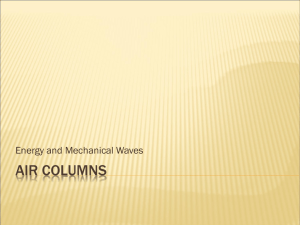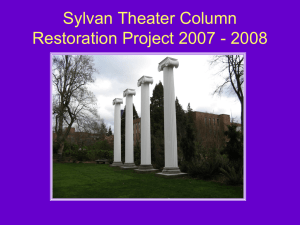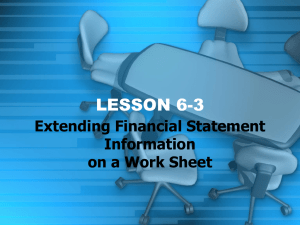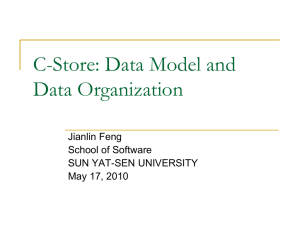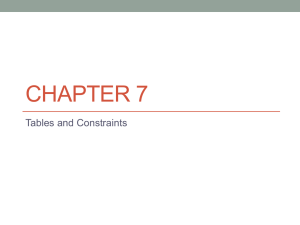Near-Collapse Performance of Existing Reinforced Concrete
advertisement
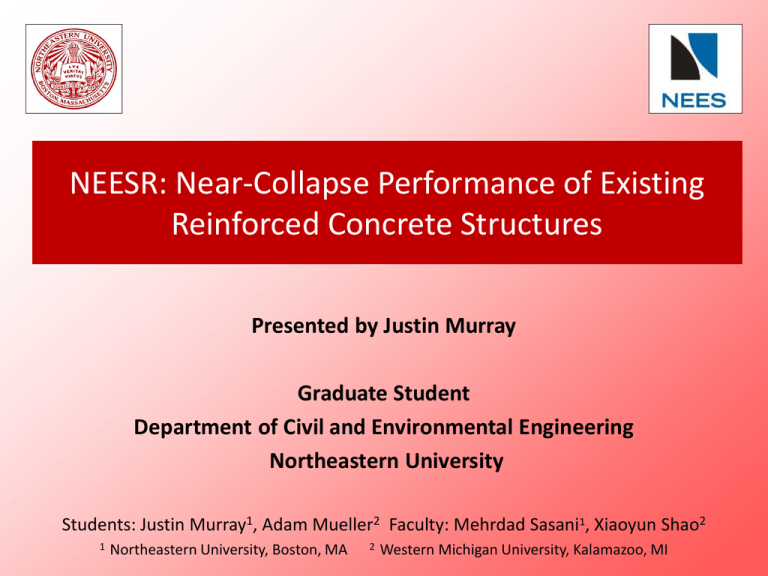
NEESR: Near-Collapse Performance of Existing Reinforced Concrete Structures Presented by Justin Murray Graduate Student Department of Civil and Environmental Engineering Northeastern University Students: Justin Murray1, Adam Mueller2 Faculty: Mehrdad Sasani1, Xiaoyun Shao2 1 Northeastern University, Boston, MA 2 Western Michigan University, Kalamazoo, MI Shear-Axial Failure Risk Concrete built • • Loads mayStructures be redistributed priorfrom to thedamaged mid-1970s are away area particularly susceptible to through different mechanisms shear-axial column failure including • Current practice in seismic (ASCE 41) –rehabilitation Vierendeel Action dictates that a column capacity –reaching Catenary Action(failure) constitutes collapse of the entire structure • A single element failure does not necessarily lead to “structural collapse” Project Goal • To show, through the use of Hybrid Simulation, that element failure does not necessarily lead to structural failure – Examining the 3 most critical column elements experimentally, up through element failures • Upon completion of experimentation, develop new methods for system level near-collapse evaluation of existing structures under seismic ground motions Hybrid Simulation • A series of hybrid simulations with full-scale column specimens at the UIUC MUST-SIM facility looks to observe shear-axial column failure, and it’s effect on the remaining portion of the structure Representative Building Plan • Reinforced Designed using Concrete Strength • Ultimate 10 Story Building Design (USD) – First appeared in design codes in 1956 publication of ACI • Design methods used are in accordance with ACI 318-63 Exterior Column Interior Column • Stiff Spandrel Frames • One-Way Slabs Hybrid Simulation • Physical Test Specimens located at University of Illinois (UIUC) MUSTSIM facility – Utilizing MUST-SIM’s 3 “Load and Boundary Condition Boxes” (LBCBs) • Computer model constructed within OpenSees (2011) at Northeastern University • Software development and control of LBCBs will be managed by the UIUC MUST-SIM team • Analyzed under uniaxial and tri-axial ground motions Conversion from 12 Degrees of Freedom to 6 Deformations • MUST-SIM LBCB’s are fixed to the top of columns • Base of test column fixed to strongfloor • Actual building columns (upper floors) have displacements/rotations at top and bottom – Must condense displacements by removing rigid body motions Matrix Transformation For the sake of space, only the first few components of the a matrix are shown below: • Transformation matrix a can remove rigid body motion from the displacement vector, where v=au • a is formed based on the . . . . . . . . . orientation of the element with respect totesting the global This approach enables of any beam-column element (not just fixed-base) with a single Loading andsystem Boundary Condition Box (LBCB) available at the UIUC MUST-SIM coordinate facility. • Angles defining this orientation are shown in the figure to the right Building Pushover Analysis • Three All areShear different, Capacity but have Models common are used factors: to determine that are likely to fail – gross crosscolumns section area – ACI-318 (2011) axial force – ASCE 41-06 (2007) concrete strength – Sasani (2007) transverse reinforcement – aspect ratio and ductility (ASCE/Sasani) Column Shear Failure (From Pushover) • • ACI (Green)results predicts failures columns are shown Pushover ofclose two critical ASCE Sasani show column A2 as the critical belowand (Shear vs.clearly Top Building Displacement) column –nd Plotted against the three failure models (see legend) st • 2 floor columns are critical due to being shorter than 1 – Axial force plotted on right axis floor Column Shear Failure (From Pushover) • Available “Limit State” material in Opensees (Elwood’s model) is modified – Can model failure based on other failure criteria – Sasani’s model showed higher shear strength in column A2 than ASCE and ACI – New material model uses Sasani’s failure criteria (equation shown below) Current studies and Future Work • Research is now centered on how the building behaves after this column loses strength • Current focus is on redistribution of the lateral and gravity loads to the neighboring columns. – Also after failure, shear demand on columns directly above or below a failed column are of particular interest. • Experiments at UIUC MUST-SIM facility – Current schedule shown above (based on availability) Modeling Element Failure and System Collapse Criteria • The mechanism and conditions for collapse of buildings representative of existing vulnerable RC frame structures under triaxial seismic ground motion will be identified and used to develop criteria, methods, and procedures for seismic collapse evaluation of RC frame structures. • We will develop capacity models for shear-axial-torsion interaction failure of columns affected by triaxial seismic actions and implementation of analytical tools in computer program OpenSees; • We will also develop methods and procedures to evaluate near-collapse performance of existing RC frames systems, which considers system level response of structures. Acknowledgement This presentation was based upon research supported by the NSF Award No. CMMI1135005, which is greatly appreciated. QUESTIONS?


